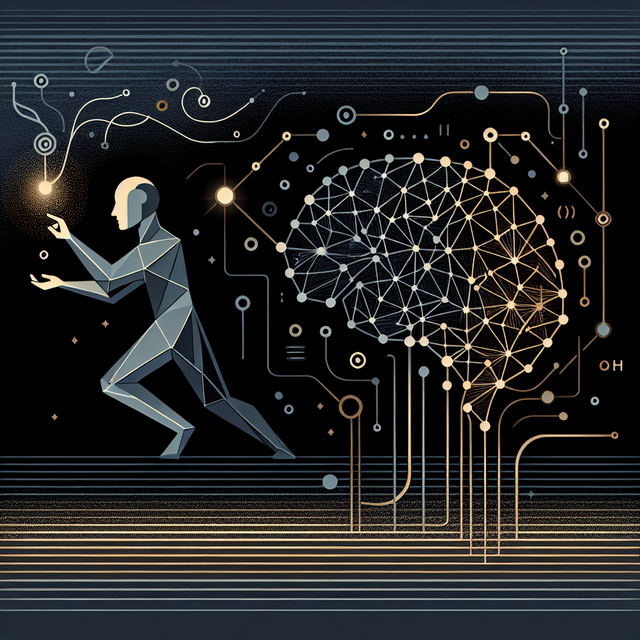
Balancing Human and AI Contributions in Coding
In today’s rapidly evolving software development landscape, finding the right balance between human expertise and artificial intelligence has become crucial for enterprise success. As organizations increasingly adopt AI-powered coding tools, understanding how to effectively combine human intelligence with AI capabilities is essential for maximizing development efficiency while maintaining code quality and security.
Table of Contents
- Understanding Human vs. AI Coding Capabilities
- Key Benefits of Human-AI Collaboration
- Challenges in Balancing AI and Human Input
- Best Practices for Optimal Integration
- Measuring Success in Human-AI Development
- Future Perspectives
Understanding Human vs. AI Coding Capabilities
AI Coding Strengths
- Rapid code generation
- Pattern recognition
- Repetitive task automation
- Consistent formatting
- Large-scale refactoring
Human Coding Strengths
- Creative problem-solving
- Strategic thinking
- Context understanding
- Complex architectural decisions
- Nuanced business requirements interpretation
Key Benefits of Human-AI Collaboration
When properly implemented, human-AI collaboration in software development can lead to significant improvements in productivity and code quality. Organizations using integrated approaches report up to 40% faster development cycles while maintaining high code standards.
Enhanced Productivity
AI-assisted coding tools can handle routine tasks, allowing developers to focus on more complex, strategic work. This division of labor optimizes resource allocation and accelerates project delivery timelines.
Improved Code Quality
Combining AI’s consistency with human oversight results in fewer bugs and better maintainability. AI tools can catch common errors while humans ensure architectural integrity and business logic alignment.
Accelerated Learning
Junior developers can learn faster by studying AI-generated code examples and patterns, while senior developers can leverage AI to explore new approaches and technologies.
Challenges in Balancing AI and Human Input
Quality Control
Ensuring AI-generated code meets enterprise standards requires robust review processes and clear quality metrics. Organizations must establish frameworks for evaluating both human and AI contributions.
Integration Complexity
Seamlessly incorporating AI tools into existing development workflows can be challenging. Teams need proper training and support to effectively utilize AI capabilities without disrupting established processes.
Compliance Concerns
Regulated industries face additional challenges in validating AI-generated code against compliance requirements. Clear audit trails and verification procedures are essential.
Best Practices for Optimal Integration
1. Establish Clear Guidelines
Develop comprehensive guidelines for when and how to use AI coding tools:
- Define specific use cases
- Set quality standards
- Outline review processes
- Document compliance requirements
2. Implement Proper Monitoring
Use development intelligence platforms to track and optimize AI usage:
- Monitor AI code generation metrics
- Analyze impact on productivity
- Measure code quality indicators
- Track compliance adherence
3. Foster Collaborative Culture
Create an environment that embraces both human expertise and AI capabilities:
- Encourage knowledge sharing
- Promote continuous learning
- Support experimentation
- Value human creativity
Measuring Success in Human-AI Development
Quantifying the impact of human-AI collaboration requires comprehensive metrics and analytics. Key performance indicators should include:
- Code quality metrics
- Development velocity
- Bug detection rates
- Team productivity measures
- Compliance adherence rates
- Resource utilization efficiency
Future Perspectives
As AI coding capabilities continue to evolve, organizations must stay adaptable and forward-thinking. The future of software development lies in finding innovative ways to leverage both human creativity and AI efficiency.
Successful enterprises will be those that can effectively balance these complementary strengths while maintaining high standards of quality, security, and compliance.
Taking Action
To optimize your organization’s approach to AI-assisted development, consider implementing a comprehensive development intelligence platform that can help measure, manage, and enhance your human-AI collaboration strategy.
Explore how AI Code Metrics can help your team achieve the perfect balance between human expertise and AI capabilities in your software development processes. Our platform provides the insights and tools needed to maximize the benefits of AI while maintaining the crucial human element in your development lifecycle.